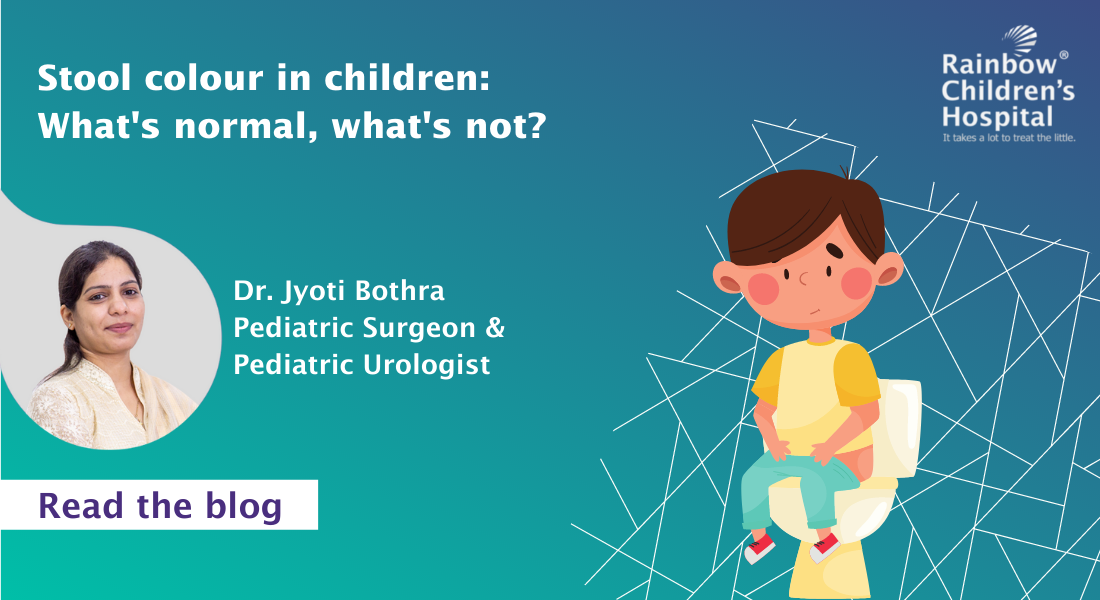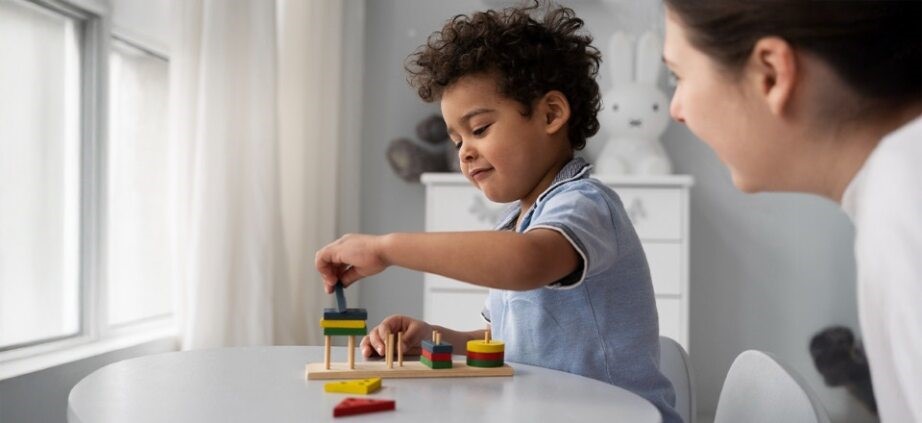Categories
Stool colour in children: What's normal, what's not?
Oct 20, 2022
Concern for a parent, eating well being the first, is whether their child is pooping right! And if the poop colour is different or unusual, it brings a state of panic and confusion for the parent.
The colour of your child’s poop is normally brown due to a pigment called bilirubin. Bilirubin is a content of the bile produced by the liver cells. It is greenish yellow to begin with, but as it travels through the intestines it breaks down and turns brown.
There are various reasons for the stool colour to change, some benign and some needing medical attention. Stools which are pink, orange or dark green in colour generally are normal or due to excess consumption of a food product, food colour or some prescribed medications.
Black or stool with blood indicates bleeding from stomach or intestine or anus (fissure being commonest) and needs surgical evaluation.Pale or white colour stools indicate absence of bile pigment bilirubin. This is seen in early days of life and can be because of liver infection or anomalies of the biliary system. Some babies are born with blocked or incompletely developed biliary tree, which hampers the drainage of bile into the intestines. This is an essentially life-threatening condition, if not treated on time as the impaired drainage causes high grade jaundice and liver failure. This pathology is called biliary atresia. It needs surgical reconstruction of the duct system in which a segment of intestine is directly attached to liver for adequate drainage of bile. Sometimes, pale colour stools are also seen in choledochal cysts with cholangitis (details in previous blog), stones blocking the biliary tree (secondary to metabolic conditions) or rarely cancer of the hepatobiliary system. All these conditions need surgical evaluation and intervention to alleviate the symptoms and avoid the complications.
So, if you see any abnormality in your child’s poop colour, have a look at the poop colour chart and consult your surgeon.
The colour of your child’s poop is normally brown due to a pigment called bilirubin. Bilirubin is a content of the bile produced by the liver cells. It is greenish yellow to begin with, but as it travels through the intestines it breaks down and turns brown.
There are various reasons for the stool colour to change, some benign and some needing medical attention. Stools which are pink, orange or dark green in colour generally are normal or due to excess consumption of a food product, food colour or some prescribed medications.
Black or stool with blood indicates bleeding from stomach or intestine or anus (fissure being commonest) and needs surgical evaluation.Pale or white colour stools indicate absence of bile pigment bilirubin. This is seen in early days of life and can be because of liver infection or anomalies of the biliary system. Some babies are born with blocked or incompletely developed biliary tree, which hampers the drainage of bile into the intestines. This is an essentially life-threatening condition, if not treated on time as the impaired drainage causes high grade jaundice and liver failure. This pathology is called biliary atresia. It needs surgical reconstruction of the duct system in which a segment of intestine is directly attached to liver for adequate drainage of bile. Sometimes, pale colour stools are also seen in choledochal cysts with cholangitis (details in previous blog), stones blocking the biliary tree (secondary to metabolic conditions) or rarely cancer of the hepatobiliary system. All these conditions need surgical evaluation and intervention to alleviate the symptoms and avoid the complications.
So, if you see any abnormality in your child’s poop colour, have a look at the poop colour chart and consult your surgeon.











